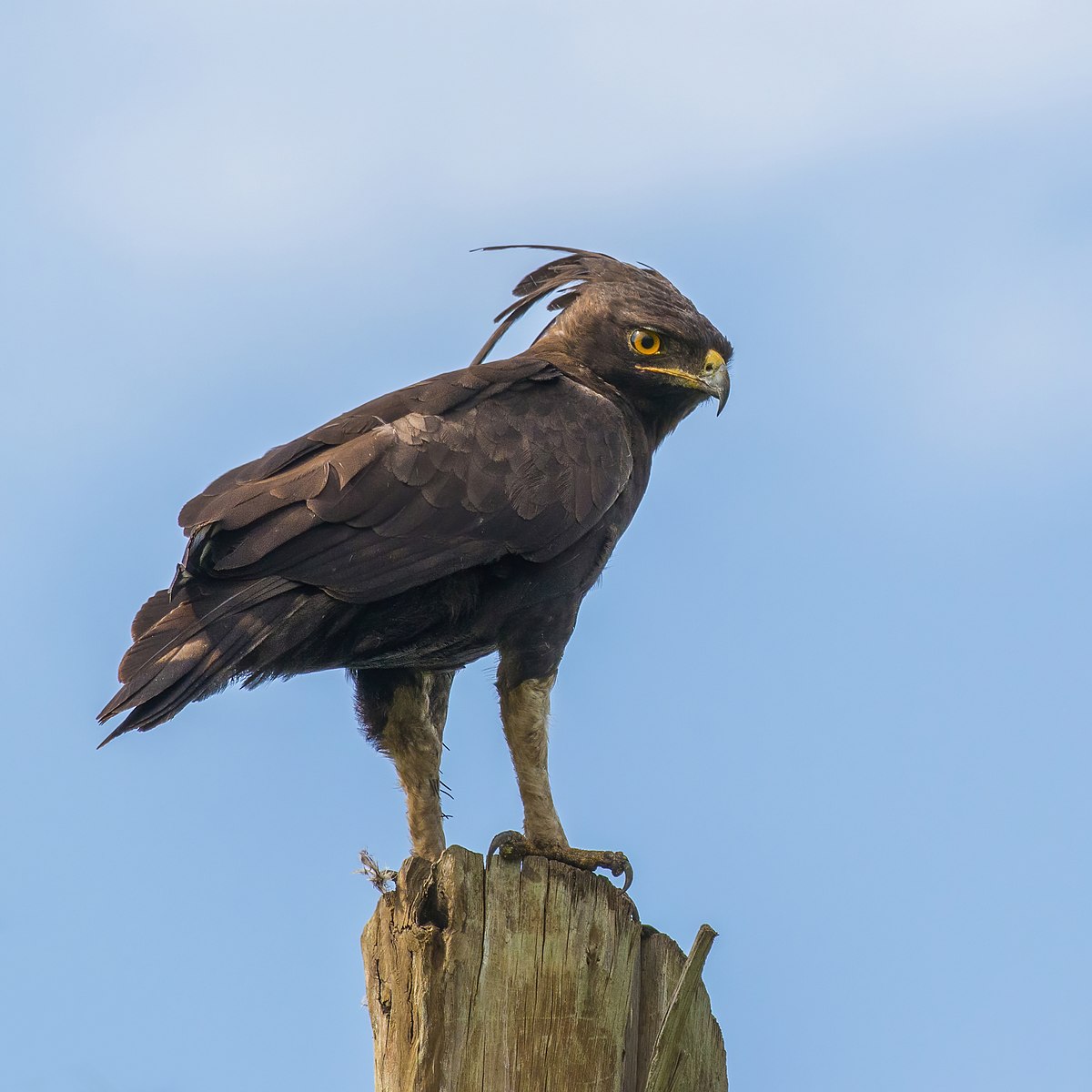The Crested Eagle (Morphnus guianensis) is a large but slender eagle species found in Central and South America, specifically in mature lowland and foothill forests. This eagle is known for its sparse distribution and rarity, making sightings infrequent and valuable. Identifying the Crested Eagle can be challenging, as it is often mistaken for the Harpy Eagle, but there are distinct differences between the two species.
Identifying the Crested Eagle
Size and Appearance
Crested Eagles are identified by their size, color morphs, and distinctive crest. Adults measure between 71-89 cm (28-35 in) in length and have a wingspan of 138-176 cm (55-70 in). Males and females are similar in color, but females are larger, as is common in raptors.
Color Morphs
Two color morphs exist: light and dark.
| Morph | Description |
|---|---|
| Light | Dark gray back and wings, slate grey head and upper breast band, white lower breast with thin, rufous barring |
| Dark | Mostly black all over, with white horizontal barring across their lower bellies |
Both morphs have a crest that ends in a single pointed feather.
Juvenile Crested Eagles
Juvenile Crested Eagles are mostly white with darker wings, and are slimmer in shape compared to the Harpy Eagle. The similar Harpy Eagle has a more contrasting black chest and lacks barring on the belly.
Habitat and Behavior
 Image source: Long-crested eagle By Charles J. Sharp
Image source: Long-crested eagle By Charles J. Sharp
Crested Eagles are found in large swaths of mature lowland and foothill forests, primarily perching in the canopy of mature lowland forest but occasionally soaring. They are not very vocal and often overlooked, despite their large size. Unlike the Harpy Eagle, the Crested Eagle spends time soaring in the sky.
Conservation Status
The Crested Eagle is classified as Near Threatened by the IUCN due to habitat loss and direct shooting by humans. Forests are being converted into agricultural fields or cattle pastures, threatening the eagle’s habitat. Additionally, humans shoot these eagles out of curiosity, fear, or because they think it will eat their domestic animals.
Threatened Species Protection
To help protect the Crested Eagle, it is essential to learn as much as possible about the species and share that knowledge with others. By raising awareness and advocating for conservation efforts, we can help ensure the survival of this magnificent bird.
Here are some additional facts about the Crested Eagle:
- The Crested Eagle is a member of the Accipitridae family, which includes hawks, eagles, and kites.
- They are known to prey on a variety of small to medium-sized mammals, birds, and reptiles.
- Crested Eagles are solitary and territorial, with pairs often remaining together for life.
- They build large stick nests high in the canopy of tall trees, where the female lays a single egg.
- Incubation lasts around 50 days, and the chick remains in the nest for several months after hatching.
- Crested Eagles are found in countries such as Brazil, Colombia, Ecuador, Guyana, Peru, Suriname, and Venezuela.
- Their scientific name, Morphnus guianensis, refers to their distribution in the Guiana region of South America.
By understanding the unique characteristics and conservation status of the Crested Eagle, we can better appreciate and protect this remarkable raptor. Sharing this knowledge with others can help raise awareness and support efforts to safeguard the Crested Eagle’s future.
References:
– Carnivora.net – Crested Eagle – Morphnus guianensis
– eBird – Crested Eagle – Morphnus guianensis
– The Peregrine Fund – Crested Eagle
– Birds of the World – Crested Eagle – Morphnus guianensis

